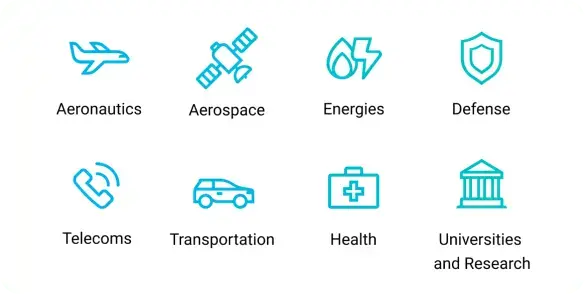Perform risk assessments using the bowtie method or LOPA (Layer of Protection Analysis) tables: GRIF Risk – Risk Analysis Software
About the Risk module

The GRIF Risk module, a risk analysis software, has been designed to analyze and quantify risks using the bowtie method and LOPA (Layer of Protection Analysis) tables.
Risk is used to model layers of protection or Safety Instrumented Systems using either the bowtie method or a LOPA (Layer of Protection Analysis) table. With its user-friendly graphical interface, this module is based on ALBIZIA, the BDD (Binary Decision Diagram) calculation engine developed by TotalEnergies, with the capacity to perform precise probabilistic calculations and provide a range of information required for risk assessments.
Benefits of the Risk module
User-friendly and ergonomic
Efficient and accurate
Option to combine
several risk matrices
(Safety/Assets/Environment)

GRIF is designed for any field of activity
Whether for an oil platform, aircraft, train or water supply system, GRIF evaluates the reliability and availability of any system using a range of computational techniques. The GRIF software suite offers a wide variety of calculation methods so that users can select the most appropriate (analytical, simulation, etc.), according to the system being modeled.
Minimum System Requirements
- Hardware requirement: Intel Core i3 or faster, 4 GB of free RAM, 1 GB of free space, no internet connection needed;
- Software requirements: Windows 10/11 or Linux or MacOS X with Java 11;
- Licences: standalone with USB dongle or floating licences with Sentinel server;
- Trial version available on our website.
Need more information?
About Boolean package

Boolean logic at the touch of a button for your reliability and safety calculations.
The Boolean package is used to perform calculations on static models in order to analyze safety systems and conduct hazard studies. It is composed of 7 modules: BFiab, Tree, ETree, SIL, Risk, Reseda and Bool. They are all equipped with ALBIZIA, the calculation engine developed by TotalEnergies to perform precise analytical calculations and rapidly produce a large amount of information on the system being assessed.
About the GRIF software suite

Identify the essential indicators of your system analysis.
GRIF (GRaphical Interface for Reliability Forecasting) is a software suite designed to help engineers determine the key RAMS (Reliability - Availability - Maintainability - Safety) indicators. Drawing on TotalEnergies' experience in simulation research and development, it features mature, high-performance calculation engines and modeling capabilities to meet all your needs in any reliability study.

